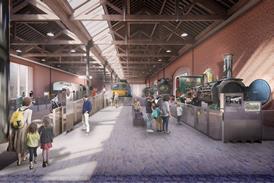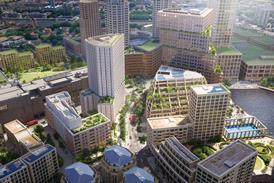- Home
 City of London to appoint architect to design firearms training facility for City police
City of London to appoint architect to design firearms training facility for City police Carmody Groarke gives preview of its revamped Manchester museum ahead of summer reopening
Carmody Groarke gives preview of its revamped Manchester museum ahead of summer reopening TP Bennett’s rethink on Canada Water scheme set to be approved next week
TP Bennett’s rethink on Canada Water scheme set to be approved next week What’s stopping us from better understanding our emissions?
What’s stopping us from better understanding our emissions?
- Intelligence for Architects
- Subscribe
- Jobs
- Events

2025 events calendar Explore now 
Keep up to date
Find out more
- Programmes
- CPD
- More from navigation items
Our urban and rural landscapes are intertwined with the history of colonialism. We must confront this legacy with honesty

Many people remain unaware of the extent to which colonialism and slavery have shaped our environment. We need to contextualise this history to fully understand it, writes Victoria Perry
‘Just how do we deal with the heritage of elite and beautiful buildings, cities and landscapes, or any work of art, which are the result of these historic Caribbean slave-based economies?’ asks historian Jeremy Musson in his review of my recent book A Bittersweet Heritage: Slavery, Architecture and the British Landscape.
It is a question I very much asked myself 20 years ago, when – newly-resident in the multi-cultural London borough of Hackney – I first embarked on the PhD research that formed the book’s foundation.
…
This content is available to registered users | Already registered?Login here
You are not currently logged in.
To continue reading this story, sign up for free guest access
Existing Subscriber? LOGIN
REGISTER for free access on selected stories and sign up for email alerts. You get:
- Up to the minute architecture news from around the UK
- Breaking, daily and weekly e-newsletters
Subscribe to Building Design and you will benefit from:

- Unlimited news
- Reviews of the latest buildings from all corners of the world
- Technical studies
- Full access to all our online archives
- PLUS you will receive a digital copy of WA100 worth over £45
Subscribe now for unlimited access.


